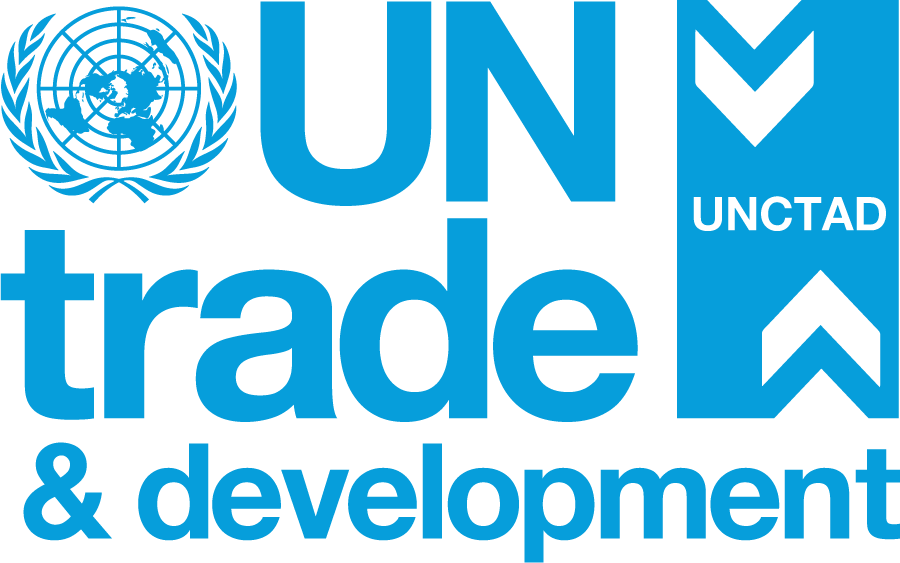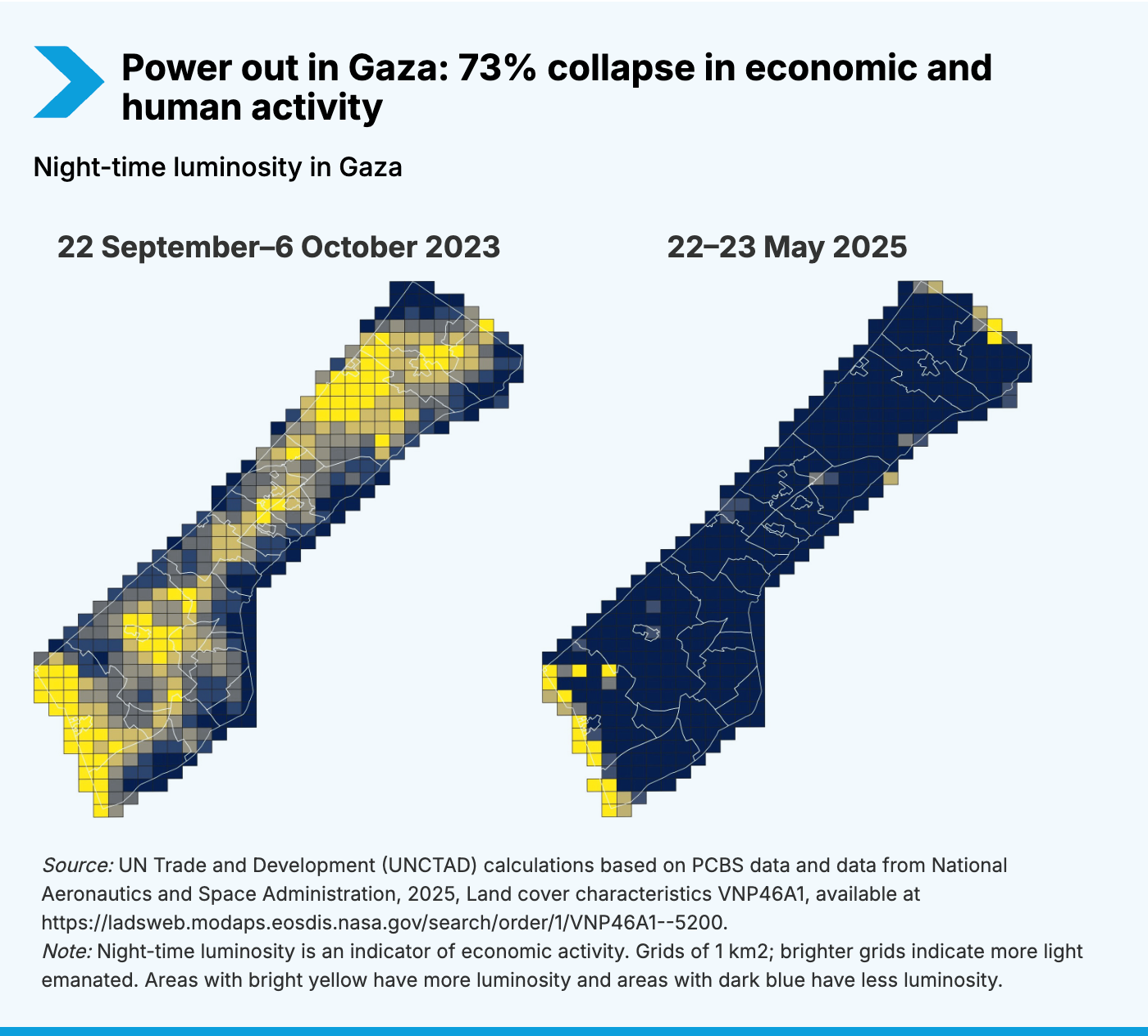A new report finds that the prolonged military operation and long-standing restrictions have driven the economy of the Occupied Palestinian Territory into its most severe contraction on record, wiping out decades of development gains and deepening fiscal and social fragility.

© Adobe Stock/Meysam Azarneshin
The report “Developments in the economy of the Occupied Palestinian Territory” finds that two years of military operations and restrictions have triggered an unprecedented collapse across the Palestinian economy. This has unfolded against a backdrop of long-standing economic and institutional fragility, with severe social and environmental consequences.
Extensive damage to infrastructure, productive assets and public services has reversed decades of socioeconomic progress in the Occupied Palestinian Territory.
The resulting economic crisis is among the ten worst globally since 1960; while the situation in Gaza stands apart; being the most severe economic crisis on record.
Meanwhile, plummeting revenues and the withholding of fiscal transfers by the Israeli Government have severely constrained the Palestinian Government’s ability to maintain essential public services and invest in recovery. This comes at a critical time when massive spending is needed to rebuild shattered infrastructure and address worsening environmental and socioeconomic crises. The escalation has pushed the Occupied Palestinian economy from a prolonged state of decline into a phase of near-total collapse, with deep repercussions across all sectors – economic, social, humanitarian and the environment. In Gaza, the entire population plunged into multidimensional poverty. The West Bank is undergoing its most severe economic downturn on record, driven by heightened insecurity, movement and access restrictions and the loss of productive opportunities in all sectors of the economy.
By the end of 2024, Palestinian GDP fell back to its 2010 level while GDP per capita returned to that of 2003, erasing 22 years of development progress in less than two years, according to UN Trade and Development (UNCTAD).
Economic collapse in Gaza
For nearly two decades, 2.3 million Palestinians in Gaza have faced severe constraints on trade, movement and access to resources within a 365 km² area – one of the most densely populated on the world. Limited entry of goods, combined with restrictions on productive inputs, equipment, and technology, and recurrent military operations, have dismantled Gaza's productive base and created near total dependence on external assistance.
In 2024, Gaza’s GDP contracted by 83% compared with 2023, following a sharp decline the year before. Over 2023–2024, GDP shrank cumulatively by 87% to $362 million. GDP per capita fell to $161 – among the lowest globally– representing just 4.6% of the West Bank’s per capita GDP, down from near parity in 1994.
Extensive destruction of infrastructure, loss of productive capacity and population displacement have inflicted lasting damage on human capital. Disruptions to education and basic services will have long-term effects on livelihoods and the very foundation of societal resilience.
Extensive damage to housing, utilities and essential infrastructure has disrupted access to food, water, health care and public services, creating an acute humanitarian and economic emergency. The scale of damage poses major challenges for economic recovery and the re-establishment of basic living conditions without extensive international support.
Even with substantial aid, recovery to pre-October 2023 GDP levels could take decades. To enable any meaningful recovery – including access to healthcare, education, clean water, and critical infrastructure – the international community must secure the durability of the ceasefire achieved in October 2025. At the same time, delivering humanitarian aid is urgent and cannot wait.
Severe economic contraction in the West Bank
The expansion of settlements and movement restrictions continue to fragment the West Bank, disrupt the economy, trade and investment, and reduce access to land, resources and markets. These restrictions affect over 3.3 million people, raising transport costs, lengthening travel times and disrupting access to markets, employment, education and health services.
Since late 2023, movement constraints have intensified, further reducing commerce and production. GDP contracted by 17% and GDP per capita by 18.8%, returning to levels last recorded in 2014 and 2008, respectively.
Fiscal pressures and institutional strain
The fiscal situation has deteriorated sharply after October 2023, making 2024 one of the most challenging years for the Palestinian Government. Revenue shortfalls, the withholding of fiscal transfers, a contracting economy and declining external support, have deepened the crisis. Fiscal pressures persisted through 2025, straining the Government’s ability to maintain essential services and macroeconomic stability.
Between January 2019 and April 2025, cumulative fiscal deductions and withheld revenues amounted to an estimated $1.76 billion – equivalent to 12.8% of GDP in 2024 and 44% of total net revenues.
Combined with a shrinking tax base and a sharp decline in donor assistance, these shortfalls have severely constrained the Palestinian Government’s ability to meet salary obligations, sustain essential public functions and deliver basic services. UNCTAD underscores the need for urgent and sustained international financial support to stabilize public finances, safeguard institutional capacity and enable recovery and reconstruction efforts.
$70 Billion needed to rebuild Gaza
The estimated cost of reconstruction and recovery in Gaza exceeds $70 billion, underscoring the magnitude of investment required to rebuild infrastructure and restore livelihoods.
UNCTAD’s report calls for immediate and substantial intervention by the international community to halt the economic freefall, address the humanitarian crisis, and lay the groundwork for lasting peace and development. The report calls for a comprehensive recovery plan for the Occupied Palestinian Territory, with coordinated international assistance, restoration of fiscal transfers, and measures to ease constraints on trade, movement and investment.







